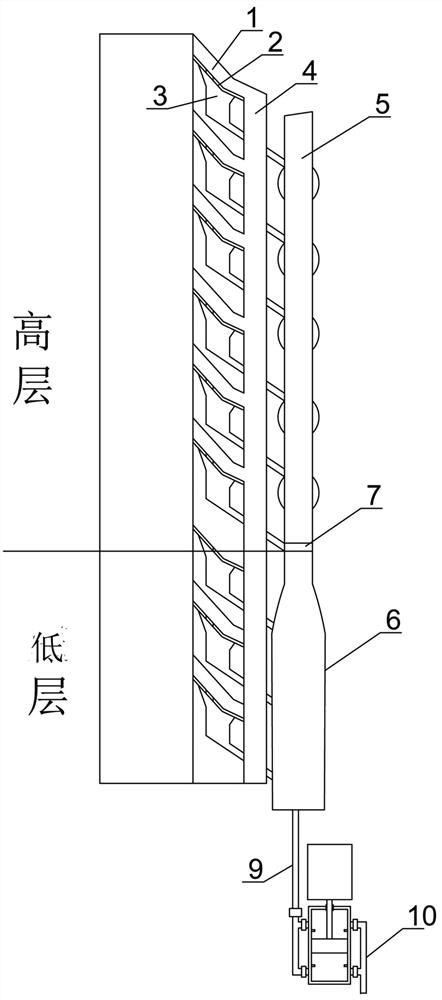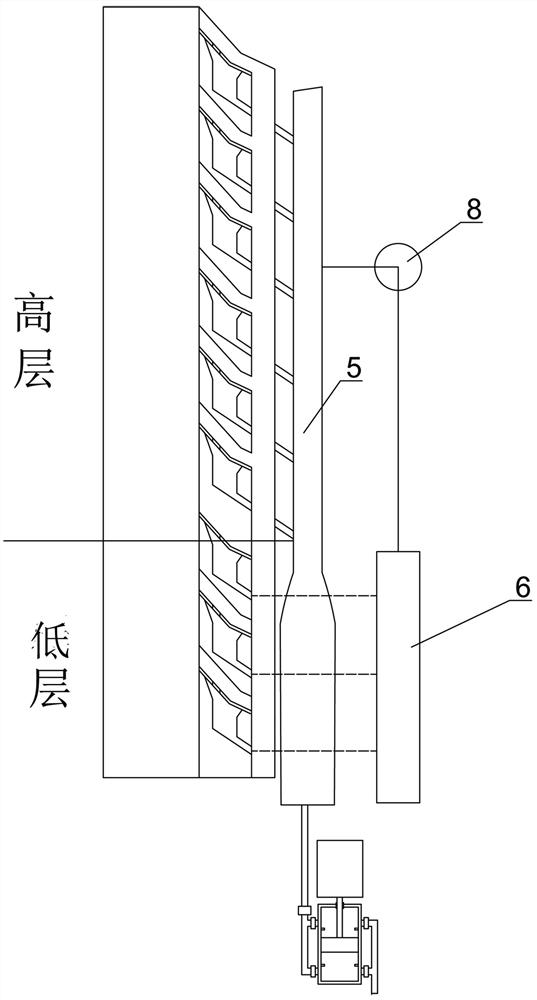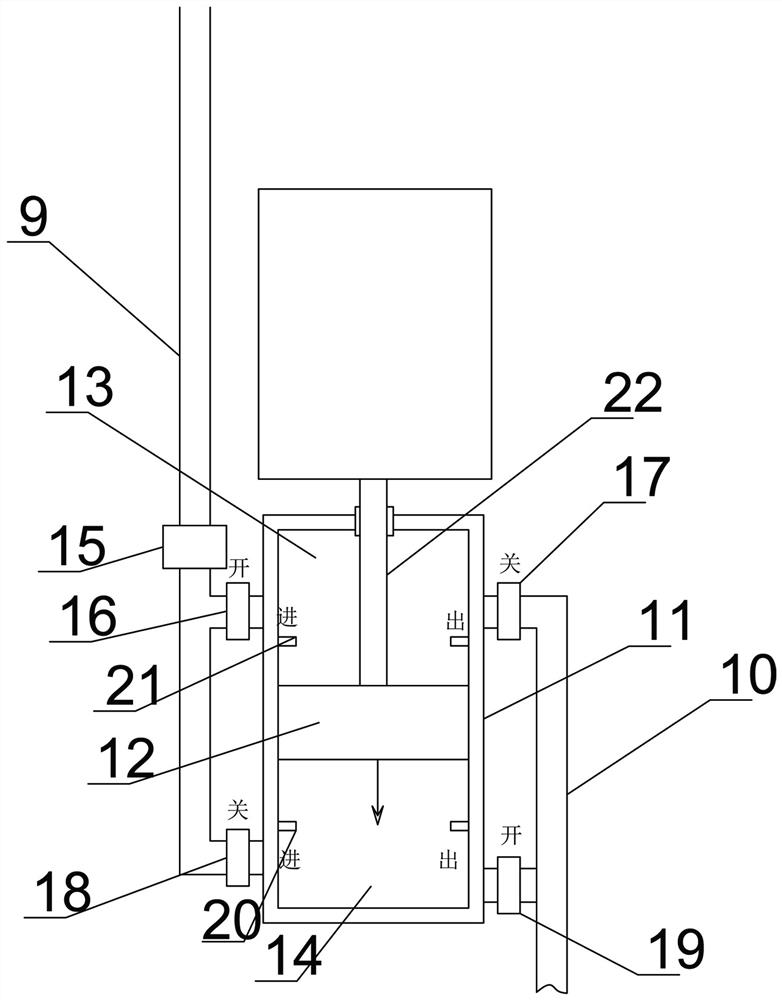High-rise building community flushing power generation system
A technology for power generation systems and high-rise buildings, applied in the directions of hydroelectric power generation, buildings, building components, etc., can solve the problems of ineffective utilization of low-level water sources and high water demand for high-level power generation efficiency.
- Summary
- Abstract
- Description
- Claims
- Application Information
AI Technical Summary
Problems solved by technology
Method used
Image
Examples
Embodiment 1
[0032] Embodiment 1: This embodiment aims to provide a flushing water power generation system in a high-rise building community, which mainly uses the potential energy of high-rise waste water to generate power. Waste water such as rainwater, bath water, toilet flushing water, etc., is aimed at the fact that most of the existing structures use water turbines to generate power , this power generation method requires a large amount of water, and needs to rely on the kinetic energy of the falling water body to impact the impeller of the water turbine. Therefore, only high-level water collection can meet the demand, and the high-level water volume is small, and it is too dependent on the supplement of rainwater, resulting in low power generation efficiency. Effective power generation cannot be realized. Based on this, this embodiment provides a system for flushing power generation in high-rise building communities.
[0033] Such as Figure 1-2As shown in , a flushing power generat...
Embodiment 2
[0044] Embodiment 2: This embodiment is basically the same as Embodiment 1, the difference is that this embodiment provides another structure of the water collection main.
[0045] This example figure 2 As shown in , the water collection main includes a low-level water collection pipe 6 and a high-level water collection pipe 5; The water pump 8 is lifted between the water pipes, and the water pump 8 lifts the water source in the lower water collection pipe to the height of the high water collection pipe during the low peak period of electricity consumption.
[0046] Therefore, in this embodiment, the low-level water collection pipe and the high-level water collection pipe are provided with two independent units, which are used to collect water from the low-level and high-level water respectively, and then the water-lifting pump is used to lift the filtered water from the low-level to a high place in the low-peak area of electricity consumption, so that it can be allocated r...
Embodiment 3
[0047] Embodiment 3: This embodiment is basically the same as Embodiment 1, and the difference is that this embodiment further explains the structure of the filter layer.
[0048] Such as Figure 7 As shown in , the filter layer includes a trash rack layer 201, a primary filter layer 202, and a high-level filter layer 203 that are arranged obliquely from top to bottom. The discharged sludge enters the sewage channel.
[0049] Impurities generated by filtration enter the sewage main pipe 4 due to their own gravity, and the filtered water passes through each layer of filtration in turn and then enters the water collection main pipe; in this embodiment, multi-layer filtration is set to ensure the cleanliness of the filtered water.
PUM
 Login to View More
Login to View More Abstract
Description
Claims
Application Information
 Login to View More
Login to View More - R&D
- Intellectual Property
- Life Sciences
- Materials
- Tech Scout
- Unparalleled Data Quality
- Higher Quality Content
- 60% Fewer Hallucinations
Browse by: Latest US Patents, China's latest patents, Technical Efficacy Thesaurus, Application Domain, Technology Topic, Popular Technical Reports.
© 2025 PatSnap. All rights reserved.Legal|Privacy policy|Modern Slavery Act Transparency Statement|Sitemap|About US| Contact US: help@patsnap.com



